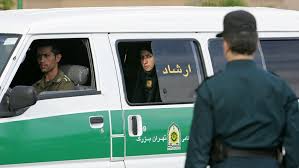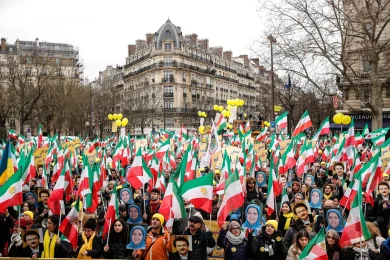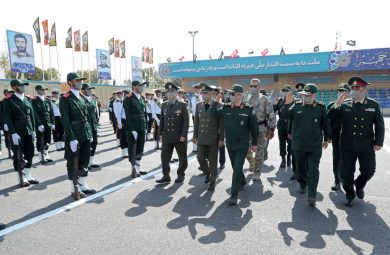In the face of censorship, surveillance, and brutal state repression, Iranian women have turned to a powerful tool of resistance: social media. Platforms like Twitter, Instagram, and Telegram have become the frontlines of the “Women, Life, Freedom” movement—a rallying cry that emerged after the tragic death of Mahsa Amini in 2022 and quickly turned into a global feminist uprising.
This analysis explores the symbiotic relationship between digital activism and political resistance, and how Iranian women have transformed the hijab from a tool of oppression into a symbol of defiance—one tweet, one hashtag, one post at a time.
1. The Origins of the Digital Revolution
A. Mahsa Amini: A Catalyst for Online Resistance
• Arrested for “improper hijab,” Mahsa Amini’s death sparked massive online outrage.
• Hashtag #MahsaAmini trended globally within hours, marking the digital birth of a revolution.
• The hashtag became a digital shrine, a unifying symbol for protesters worldwide.
B. #WomenLifeFreedom Goes Global
• Originated from Kurdish feminist roots: “Jin, Jiyan, Azadi”.
• Adapted and adopted as #WomenLifeFreedom, it became the defining slogan of Iran’s feminist resistance.
• Used in over 30 languages—showing the global reach of the movement.
2. Hijabs and Hashtags: Symbols of Resistance
A. The Hijab as a Political Battlefield
• Mandatory hijab laws have been used as tools of state control over women’s bodies since 1979.
• Women burning hijabs or removing them in public went viral, becoming acts of civil disobedience.
• Videos and images of women without hijab flooded social media, creating a visual rebellion.
B. Hashtags as Modern Protest Tools
• #No2Hijab, #MyStealthyFreedom, and #LetUsTalk empowered women to speak out safely.
• Hashtags provided visibility, community, and protection in digital spaces.
• Viral trends allowed global users to participate in Iranian protests, even from afar.
3. Social Media as a Weapon Against Censorship
A. The IRGC’s Fear of Digital Expression
• The Islamic Revolutionary Guard Corps (IRGC) invests heavily in cyber surveillance and internet blackouts.
• During protests, internet shutdowns are used to block information from leaving the country.
• Despite this, VPN usage, diaspora platforms, and encrypted apps keep the flow alive.
B. The Rise of Citizen Journalism
• With mainstream media banned, Iranians became their own reporters.
• Social media allowed protesters to document violence, arrests, and resistance in real time.
• Citizen footage from the streets of Tehran, Rasht, and Sanandaj went viral globally.
4. The Role of the Iranian Diaspora
A. Amplifying Voices from Inside
• Activists abroad, like Masih Alinejad, used platforms like Instagram to broadcast Iranian stories.
• Diaspora journalists translated and shared content for non-Persian-speaking audiences.
• Social media became a bridge between Iranian protesters and the global community.
B. Organizing Global Solidarity
• Massive rallies in Berlin, Paris, London, and Washington were organized online.
• Hashtags helped coordinate protest locations, speakers, and fundraisers.
• The Iranian diaspora played a crucial role in keeping international attention focused.
5. Risks, Challenges, and Digital Repression
A. State Surveillance and Digital Infiltration
• The regime uses fake accounts, bots, and tracking software to identify and arrest activists.
• Many online users have faced interrogation or arrest due to Instagram stories or tweets.
• IRGC’s cyber division is one of the largest and most sophisticated in the Middle East.
B. Combating Misinformation
• Fake news and regime propaganda flood social platforms to discredit the movement.
• Activists and journalists rely on fact-checking networks and peer verification to combat lies.
6. The Power of Visual Storytelling
A. Viral Images That Changed Everything
• Photos of women cutting their hair, bleeding protesters, or burning hijabs moved millions.
• Visuals helped humanize the movement, breaking the barrier of language and geography.
B. Art and Resistance
• Digital art—shared widely on Instagram and Twitter—became tools for mourning and mobilization.
• Artists turned victims like Mahsa Amini into global symbols of resistance.
7. The Lasting Impact of Digital Activism
A. Policy Influence
• Online pressure led to real-world outcomes, like EU and US sanctions on IRGC officials.
• Social media kept Mahsa Amini’s story alive in international headlines for months.
B. A New Generation of Digital Rebels
• Iran’s Gen Z is tech-savvy, bold, and deeply connected to the outside world.
• They are reimagining activism through memes, music, TikTok videos, and encrypted organizing.
8. What the World Can Do
A. Support Internet Freedom in Iran
• Provide tools like VPNs, Starlink, and anti-surveillance software.
• Advocate for tech companies to resist IRGC censorship and protect Iranian users.
B. Share and Amplify
• Use your platform to share verified content from Iranian activists.
• Follow and boost hashtags like #WomenLifeFreedom, #FreeIran, and #StopIRGC.
C. Demand Accountability
• Push for governments to sanction IRGC cyber units.
• Support initiatives that protect digital rights and fight censorship.
Conclusion
In a country where speaking out can mean prison—or worse, social media has become both sword and shield. Iranian women have shown the world that hashtags can be revolutionary, and that the fight for bodily autonomy and freedom doesn’t end in the streets—it continues online, powered by digital bravery and collective defiance.
The movement “Women, Life, Freedom” is not just about Iran. It is about the power of digital resistance, the strength of female leadership, and the role the world can play by simply choosing to listen, amplify, and act.
Join Our Newsletter!
Stay informed with the latest updates, news, and ways to take action in the fight for justice and global security. Sign up now to get updates delivered straight to your inbox!





